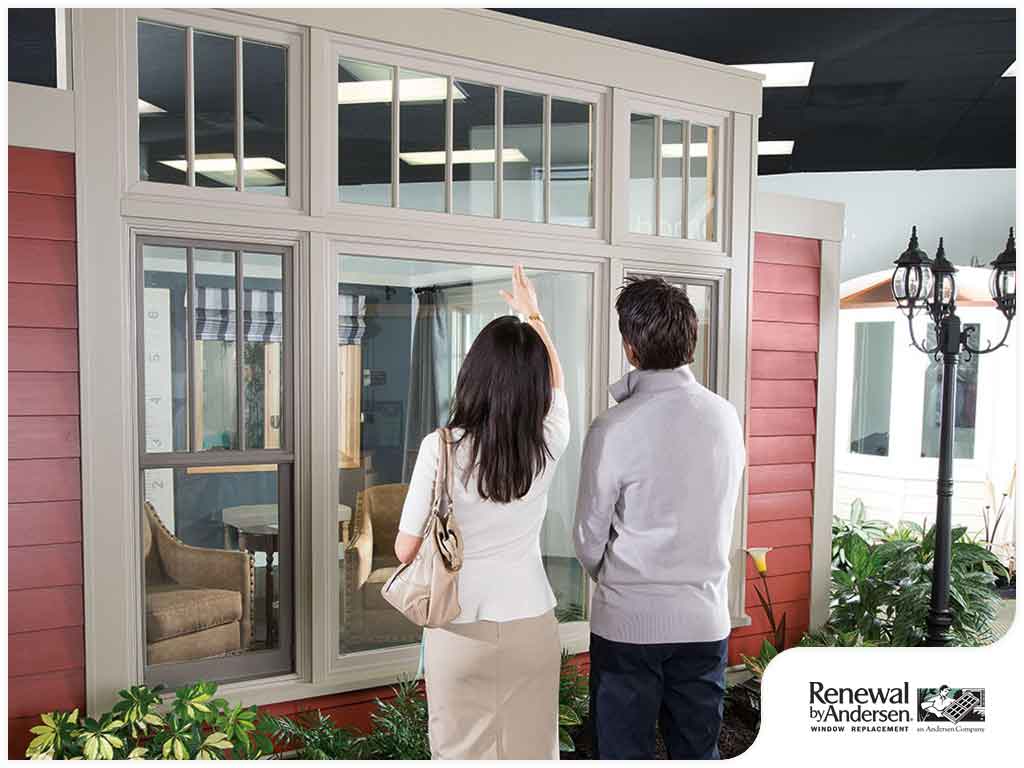MENU


Window replacement is more than just getting the right style and color. While it’s certainly important to choose replacement windows that suit your home’s architectural style and overall design, you should also make sure your new windows are the correct size.
Standard Window Size
Windows are available in average sizes. Double hung windows, for instance, typically have sizes ranging from 24 to 48 inches for width and 36 to 72 inches for height. However, keep in mind that the actual measurements of a window is usually 1/2 inch less than the whole number indicated on the label. For example, a window with a 44-inch by 44-inch opening will actually measure 43 1/2 inches x 43 1/2 inches.
Window manufacturers typically add half an inch so that windows can be installed with ease. Of course, not all standard window sizes will work for every home so it’s best to have a design consultant determine the specific measurements that are appropriate for your home.
To determine the right measurements, experts consider a few factors, including window orientation, thermal mass and floor area. These elements generally impact the amount of heat that enters or gets absorbed inside your home. Add to these the area of glass that your window will have, and your home’s indoor comfort and energy efficiency could potentially be affected. That said, these factors should guide you in selecting the right window size.
Orientation
Figure out the locations of the existing windows in your home. Depending on your region, some of your windows may be exposed to a higher amount of sunlight than other areas. For instance, if you have north-facing windows, you might want to take advantage of their heating benefits during winter and opt for larger-sized windows. However, don’t forget to consider other seasons, too. In summer, north-facing windows may expose you to too much sun. If you have opted for a larger window, you might want to add eaves and awnings as well.
Thermal Mass
Thermal mass refers to the ability of a material to absorb heat energy. Typically, thicker materials like concrete, bricks and tiles have a higher thermal mass than lightweight materials like timber. With regards to windows, homes with a higher level of thermal mass are recommended to have larger areas of glass – which means larger windows. Meanwhile, homes with less thermal mass will do better with smaller areas of glass, meaning smaller windows.
Floor Area
Naturally, the size of your window should be proportionate to the floor area of the room. For instance, the size of east-facing windows may not exceed 15% of the total floor area of an individual room. In the case of west-facing windows, the size should be less than 10% of the total floor area of the room. For south-facing windows, the recommended size is less than 15% of the total floor area of the room. And, for north-facing windows, determining the appropriate window size can be a bit more meticulous since floor material and sun access are considered together with floor area. For example, if you have timber flooring, window sizes can be up to 20% of the total floor area of the room. If you have concrete slabs, the size of your window can be up to 25% of the total floor area of the room.
Other Things to Keep in Mind
Here are a few other tips that you should remember when planning for your new window installation:
Renewal by Andersen® of Nashville offers top-quality windows in various styles, sizes and colors. Whether you’re keen on installing bay windows or custom windows, our staff will ensure first-rate service from start to finish. Call us at 866-609-5033 to learn more about our products and services. You can also fill out our contact form to request a free estimate. We serve homeowners in Murfreesboro, TN.